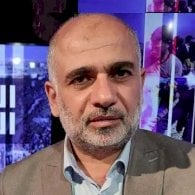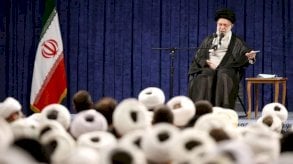There is an old Chinese saying: “If you want to grow rich, first build a road.” China knows a thing or two about building roads, and ports, and bridges, and airports, and power stations, and other infrastructure. Over the past three decades, China has arguably been engaged in the deepest and most transformative infrastructure ramp-up in the history of our planet. From a flailing state with shockingly high poverty rates in the early 1980s to a global economic superpower today, China’s road to progress has been built on, well, roads. China’s “roads” by sea, land and air have connected it to the world, positioning it as a manufacturing powerhouse, lifting hundreds of millions of people from poverty and reshaping global economic geography. Now China is aiming to take it one step further with an ambitious initiative to marshal up to $1 trillion for infrastructure spending across Asia, the Middle East and Africa, all bundled into a program newly renamed as the Belt and Road Initiative (BRI). It is a compelling vision backed by a state with substantial cash firepower. It is particularly compelling if you are a cash-poor, underdeveloped state — much like China was in the early 1980s — and a large, rich foreign power offers to pay for ports, bridges and roads without too many strings attached. Consider Pakistan. China will spend potentially up to $60 billion on ports, roads, special economic zones and other infrastructure of connectivity in a move that would benefit both nations, linking China’s more underdeveloped western provinces with the Arabian Sea and the Indian Ocean by water, and with South Asia and the Middle East by land. For Pakistan, China’s investment sends a jolt of electricity figuratively and literally to the economy, boosting growth prospects and increasing power supply. The initiative is also compelling if you are a middle-income or advanced economy aware of the power of connectivity to drive gross domestic product (GDP) growth and create new markets for your goods. The port China is building in Pakistan or upgrading in East Africa, or the railways and roads being created across Africa and Eurasia, will benefit exporters from Europe to Japan and Russia to South Africa. There is something unmistakably simple and profound about infrastructure’s impact on the bottom line: When you build it they may not all come, but those who do — including many in poverty-stricken regions — invariably benefit. That is why 29 heads of state, and thousands of senior officials and business leaders from more than 80 countries, went to Beijing this week to attend the first global confab around President Xi Jinping’s signature policy initiative. But the US and the largest advanced economies in Europe have sent lower-level delegations, as have most Middle East countries. Saudi Arabia will be represented at a senior level by Minister of Energy, Industry and Mineral Resources Khalid Al-Falih. Given his expanding portfolio across the economy, his presence sends a powerful signal that Riyadh is paying attention to Beijing. The only G7 economy to be represented at the highest level will be Italy. This is a mistake. The West and the Middle East should embrace Beijing’s call for greater infrastructure building and show up at the forum, even if, as many in the West fear, it would be seen as a propaganda coup for Xi. In an increasingly uncertain world fractured by rising inequality, populist backlashes against globalization, the automation challenge to manufacturing and new rounds of protectionism, China’s BRI should be welcomed, supported, emulated and even co-opted. The Asian Development Bank estimates that developing Asian economies need to spend $1.7 trillion on infrastructure every year simply to maintain growth momentum. In Africa, poor infrastructure continues to hamper the growth prospects of a continent with tremendous upside potential. Several of the non-oil-rich Middle East states will also need large infusions of cash for infrastructure to stay afloat in a global economy that prizes connectivity. All this means that any initiative that promotes infrastructure building should be supported. After all, who can be against building a road? This is not just any initiative, and China is not just any country. There is a fear in some quarters that its massive infrastructure build-up comes tied with geopolitical strings. Xi’s more aggressive maneuvering in the South China Sea has also raised concerns among many of America’s Asian allies. And India, peeved by China’s massive build-up in Pakistan, has decided to pass on the BRI event. The Trump administration has sent a relatively low-level delegation to the event. This is a mistake, much as it was a mistake by the Obama administration to refuse to participate in the Asia Infrastructure Investment Bank (AIIB), part of the mosaic of new institutions launched by China to support the initiative. Saudi Arabia joined the AIIB in January 2015. Former World Bank President and US Deputy Secretary of State Robert Zoellick famously said China needs to become a responsible stakeholder in the international system. The BRI is about as good an example as any, and contributes in a large way to a new world order as the post-World War II global financial architecture needs support. Some will say the initiative is simply a ploy to deploy China’s excess steel and cement capacity to foreign markets. Given the immense infrastructure needs, even China’s vaunted excess capacity could not meet all those needs, but even if this was the case, the correct response would be: So what? Does it matter to the Pakistani who may now have a job, or the Pakistani business that may now have new growth opportunities, if this was all provided by excess Chinese capacity? That sounds like the argument of a professional cynic comfortably ensconced in a Western lifestyle. In terms of scope and sheer size, the BRI dwarfs the Marshall Plan, which helped rebuild Europe. Even if only a quarter of its goals are met, the effects could be transformational on a global economy in dire need of jolts of electricity. |



















التعليقات